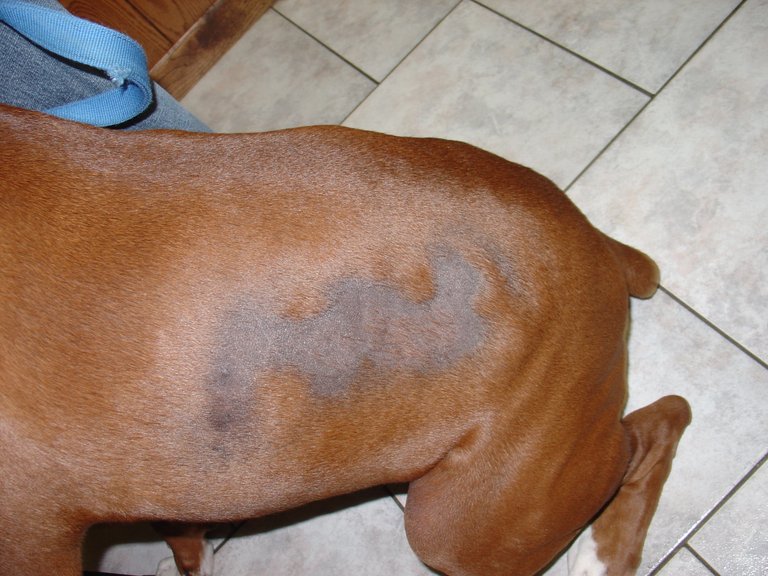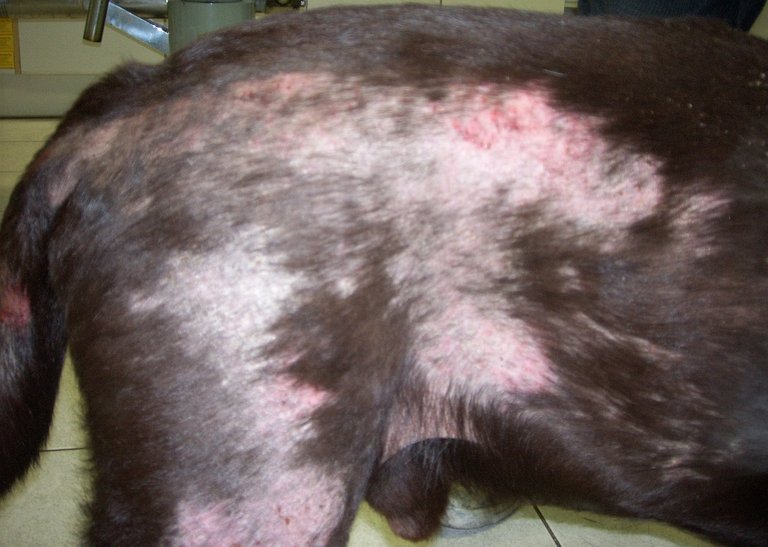A friend called to complain about the hair loss of her little puppies and I had to tell her to take the pet to a vet close to her, the reason why I advised her to go to a vet is that there are several reasons for hair loss in puppies, yes, there are different factors contribute significantly to this happening.
Your dog could be shedding naturally, and this is more common during spring and early fall. However, when patches and itching are noticed alongside the hair loss, it could be a cause for worry. Briefly, let's scan through the existing possible triggers to the hair loss your puppy is most likely experiencing.

Credit
Your pet may be reacting to an allergy, if you discover redness or irritation, it most likely signifies the presence of an inflammation happening due to an allergy. When your puppy has an allergy, you will notice the itching and licking happening consistently, leaving the skin open to infection.
Some dogs are allergic to the saliva from flea bites, this could get their skin scabbed or red. They may also be allergic to pollen, dust, spores, or other environmental issues.
Another allergy to watch out for is the food allergy, your pet may simply be reacting to specific ingredients in the food you just served him.

Credit
Aside from allergies, your pet may also be reacting to an imbalanced meal. When your pet is nutritionally deficient, it could result in hair loss.
The endocrine disorder is a possible reason why a pet may lose hair. Endocrine diseases include; Cushing's disease, hypothyroidism, alopecia x. The presence of a skin parasite could also make a puppy feel it and lose hair in the process.
When a puppy has an autoimmune disease, it could experience significant hair loss. The conclusion about the reason why your pet is losing hair cannot be made until you pay a visit to your vet.
Consistent scratching and licking could create open wounds on the dog's skin which isn't a beautiful sight to behold usually, and to get this condition relieved, understanding the underlying cause remains a necessity.
Alopecia is a general term used to describe hair loss and it would interest you to know that humans are also affected with alopecia, but we are more focused on pets here.
Alopecia makes an affected person lick excessively, have a thin coat area, get a darkened skin, dandruff or flaky skin, a dry, crusty skin, with red spots found on the skin.
There are different forms of alopecia too, each depending on the pattern of loss and the form in which it takes.
Post-clipping alopecia which usually affects heavy-coated breeds, over the areas that have been clipped recently.
Pinnal alopecia which primarily affects the ear flaps.
Color dilution alopecia is a generalized type of hair loss, bumps, and skin dryness.
Alopecia areata, most likely has the neck and head affected, after some time, the area where hair was lost may turn black or grey with an extra pigment deposition.
Post-injection alopecia appears as a patch of hair loss that is confined to an area of recent rabies vaccination.
Dear friend, while you may be worried about the hair loss in your pet friend, take that worry to a vet. One cannot determine by mere sight if it is a serious infection or just a thing to ignore.
References
wagwalking.com/condition/hair-loss
akc.org/expert-advice/health/alopecia-dogs
msdvetmanual.com/integumentary-system
embracepetinsurance.com/health/alopecia
Thanks for your contribution to the STEMsocial community. Feel free to join us on discord to get to know the rest of us!
Please consider delegating to the @stemsocial account (85% of the curation rewards are returned).
Thanks for including @stemsocial as a beneficiary, which gives you stronger support.